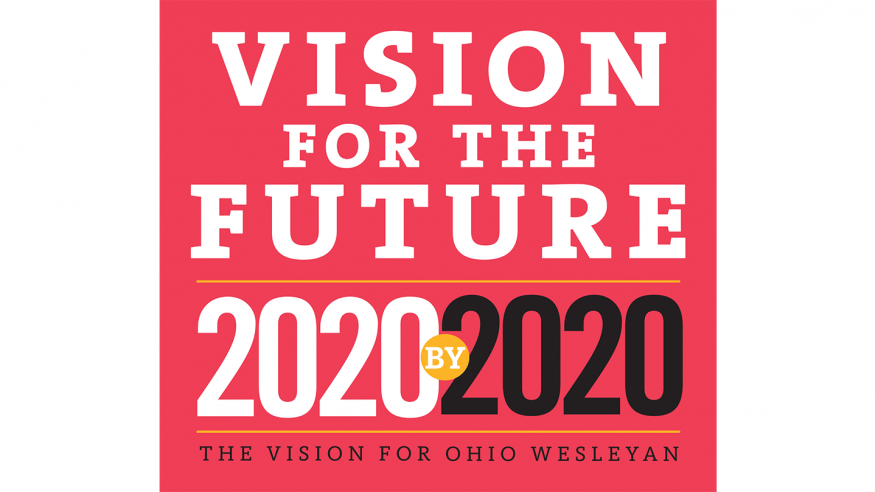
Vision for the Future: 2020 by 2020
A bold new strategic plan for increasing enrollment and raising the University’s profile by creating new programming, enhancing the student experience, improving campus buildings and residential facilities, and securing the University’s financial future.
As Ohio Wesleyan University approaches its 175th anniversary in 2017, President Rock Jones and the Board of Trustees looked around campus, from Stuyvesant Hall down to Selby Stadium, and into the future. They examined how Ohio Wesleyan can best secure the core elements of its historic mission for 21st-century students, including the commitment to providing a vibrant residential campus founded in the liberal arts, remaining open and accessible to all, and being dedicated to the benefit of society.
Small residential liberal arts colleges face a number of challenges in today’s marketplace, including demographic shifts, rising costs, and aging facilities. As identified in a study by Bob Sevier of Stamats, a leading expert in the field of higher education, the most vulnerable institutions share several characteristics, including academic programs misaligned with the marketplace, lack of a compelling vision and less than 2,000 student enrollment.
To address these areas head-on, and strengthen the commitment to providing a practical liberal arts education, the ambitious goal of attaining an enrollment of 2,020 students by the year 2020 was created, growth of more than 20 percent in the student body.
But enrollment growth isn’t the ends; it’s the means to a larger goal. “The ultimate objective is being a dynamic, premier institution in the tradition of the liberal arts that connects theory with practice, the classroom with the world, and that prepares students for leadership,” says Jones.
The vision for Ohio Wesleyan, 2020 by 2020, seeks to ensure the long-term viability of the University by establishing a plan for growth through five key areas of emphasis: aligning academic and co-curricular programs with current needs, improving student experience and retention, boosting recruitment, maintaining and improving the physical campus, and ensuring financial stability.
“It’s a vision for Ohio Wesleyan; it’s about the kind of institution we want to be,” Jones says.
 Program Initiatives
Program Initiatives
Faculty across OWU have been re-examining the needs and interests of students and the marketplace with an eye toward developing new academic programs. “As the marketplace evolves and student interests shift, it is critical that OWU continue to adapt to meet these changing needs,” says Dale Brugh, associate dean for innovation. “Creation of new programs is an important component of our effort to achieve a larger student body.”
Creation of new programs is an important component of our effort to achieve a larger student body.
Associate Dean for Innovation
Business administration and computational neuroscience majors were introduced in fall 2016, and the former is already the third-most popular major among incoming students. Faculty members have surpassed the goal of two new majors per year by recently developing new majors in communication, data analytics, nutrition, Middle Eastern studies, and social justice. All will be available in fall 2017. Faculty also developed a new major in special education, which must be approved by the Ohio Department of Education. (See OWU Adds New Majors story for more information.)
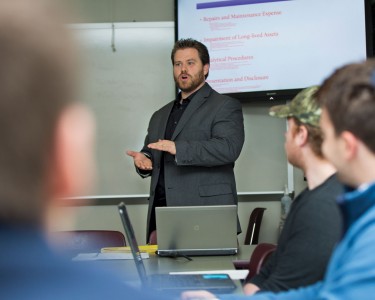
Many of these new majors are linked to career paths, some in new areas like data analytics, yet each is also enhanced with OWU’s core foundation in the liberal arts. OWU graduates will have the expertise and the broad critical thinking skills to become leaders in their fields.
Summer online classes were introduced for the first time this year and led to a 30 percent increase over last year in summer session enrollment. OWU is looking to double the number of online classes for next summer.
Athletic programs and co-curricular activities are also key areas for growth. One-third of all students participate in a varsity sport, and nearly everyone plays intramural sports, performs in music or theater, or participates in a club. OWU coaches are working to increase roster sizes, where appropriate, and the University is examining options for new sports teams and other extracurricular activities.
 Student Experience & Retention
Student Experience & Retention
To address the issue of student retention, which currently stands at 80.7 percent (compared with 85 percent or higher among peers according to U.S. News & World Report), the Student Affairs division was reorganized, with the goal of improving first-year retention to at least 85 percent by 2020. Dwayne Todd was hired in June as the vice president for student engagement and success, followed by Brad Pulcini, the assistant dean for student engagement and director of the first-year experience, in August.
Pulcini’s two primary job responsibilities obviously go hand in hand. “First year is the springboard of success to remaining a member of the OWU community,” he says.
First year is the springboard of success to remaining a member of the OWU community.
Assistant Dean for Student Engagement and Director of the First-Year Experience
With that in mind, Student Affairs is re-evaluating new-student orientation, to focus more on community building. Three or four days in June would allow first-year students to be introduced to campus, meet their peers, and register for classes. An additional day could be offered prior to convocation in the fall for students who aren’t able to attend in June. The goal would be to allow students to adjust in stages, so that fall orientation can focus more on preparing students for the rigors of college academics.
Consideration is also underway to refashion the residential experience for first-year students to instill a strong sense of community from the very first semester. “This will involve better connecting the curricular and co-curricular aspects of the first-year experience through the development of living-learning communities, revising the residential programming model to better facilitate that goal, and adapting the residential adviser role to include a stronger mentorship component,” Todd says.

To increase retention, the University is purchasing student success software to allow for identification and outreach to students who might be at risk early in the semester, allowing Pulcini to be proactive and connect a student with support resources. The software allows for faster follow-up with students after the identification of so-called “red flag behaviors” such as requesting a transcript (indicating a possible desire to transfer), or performing poorly on a first assessment in class (a sign he or she could be struggling academically), or not using the swipe card to enter dining facilities (because if a student isn’t eating, he or she could need help).
To address the sometimes difficult transition back home for break after fall semester, Pulcini is creating a program that brings first-year students together over coffee to talk with upperclassmen about the adjustment.
Todd and his staff are working now with a cross-functional team of faculty, staff, and students to refresh their plan for retention to provide a clear set of priorities and tactics. “We believe the changes we will begin to make in the first year will have a lasting transformative effect on students throughout their entire OWU tenure,” Todd says.
 Student Recruitment
Student Recruitment
One of the primary aims of increasing enrollment to 2,020 by 2020 is to allow more students to take advantage of the quality education and opportunities available at OWU without compromising admission standards. Current enrollment is 1,650 students, but the campus can accommodate 40 percent more, around 2,400 students. Enrollment has fluctuated over the decades, with the low point 1,387 students in 1985.
Susan Dileno, vice president for enrollment, says growing enrollment will be a challenge, but it is attainable, with the cooperation of all departments involved in the 2020 Vision. “We know students find mid-to-larger institutions more attractive, and there’s always a risk when you’re dipping below 2,000 that prospective students are fearful it might replicate their high school experience,” says Dileno.
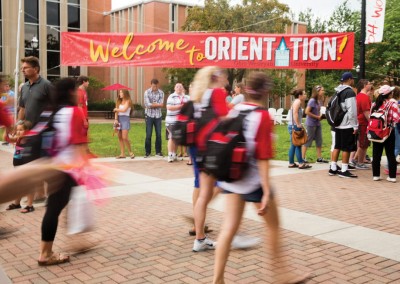 The University’s long-standing relationships and reputation are assets when it comes to recruitment. “We have a good rapport with guidance counselors who know our history, and we’ve continued those strong relationships. I think the sense of community here and social life and relationships with faculty are things that give us the edge over other institutions,” Dileno says.
The University’s long-standing relationships and reputation are assets when it comes to recruitment. “We have a good rapport with guidance counselors who know our history, and we’ve continued those strong relationships. I think the sense of community here and social life and relationships with faculty are things that give us the edge over other institutions,” Dileno says.
“When they visit, it’s a true and powerful experience for prospective students. When you ask a current student why they’re here, (the strength of those connections) are typically what they’ll cite.”
To broaden the University’s reach to prospective students, two regional recruiters were hired, one based in Chicago and focusing on Illinois and the Midwest and the other based in Cleveland, focusing on that region. Already, the incoming Class of 2020 was up 12 percent over the previous year. The class is also the most diverse in our history, including more than a third of U.S. students who are multicultural, as well as students from 35 states and 11 countries.
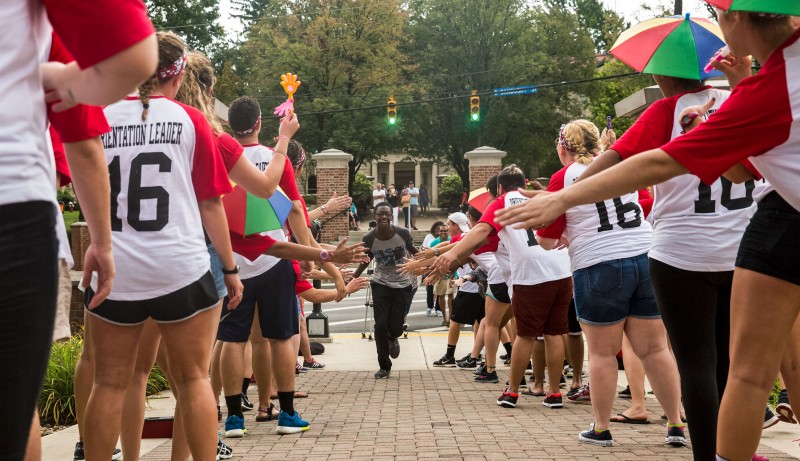
Nicole More, director of international admission, and her office are emphasizing recruitment in China, India, Pakistan, and Vietnam, along with a few other locations. “We are connecting with OWU alumni and international schools around the world, plus looking to form new partnerships when possible,” More says.
The Admissions office is also focusing on recruitment of transfer students, which are a substantial pool of possible applicants. According to DeVry, at any given time, 40 percent of college students are transfer students. Recognizing this reality, OWU has a partnership with 25,000-student Columbus State Community College designed to allow for easier transfer of credits and is dedicating more resources to process transfer credits for those students.
 Physical Campus
Physical Campus
The Ohio Wesleyan campus has always been a beautiful one, but making sure it remains so while adapting to fit current needs is a constant area of focus. From regular beautification efforts, like landscaping and improved signage, to consideration of long-term plans for first-year housing, enhancing the physical campus is critical to ensuring that OWU is attractive to incoming students and a worthy home to current ones.
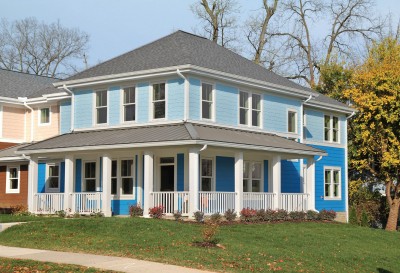
Recent major renovations to Merrick Hall, as well as the construction of the Simpson Querrey Fitness Center and renovation of Edwards Gymnasium – all made possible through major philanthropic support – have already made significant impact to the campus. Renovations to the Admissions office in Slocum Hall were completed over the summer, and the newest Small Living Unit (SLU) duplex community, the Dittrick House, was dedicated in October and represents the first new student housing construction in more than 40 years. (See Dittrick House story for more information.) An additional SLU at Rowland Avenue and Washington Street is scheduled to welcome residents in January with construction of a new honors house on Oak Hill west of the Butler Jones House slated to begin over winter break.
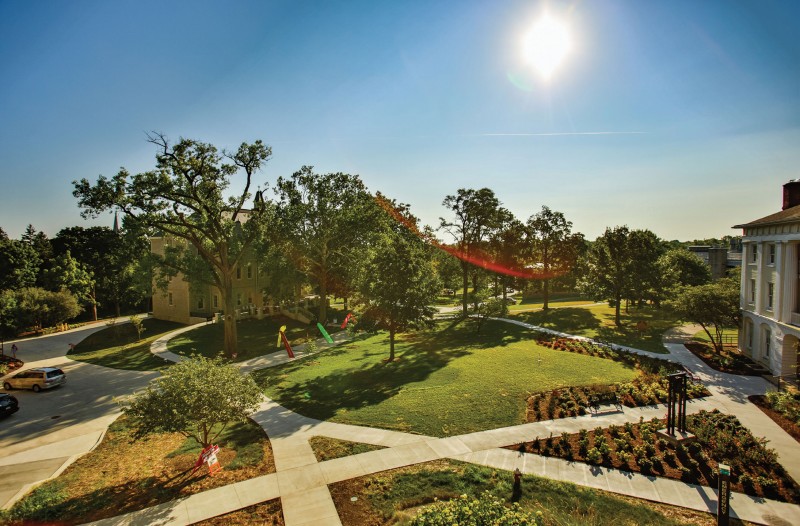
To further strengthen OWU’s identity as a residential campus and build community, plans are underway to further enhance the JAYwalk as OWU’s Main Street and town square.
 Financial Plan for the Future
Financial Plan for the Future
To secure long-term viability, the Board of Trustees and its finance and investment committees have taken steps to define building blocks for growth, including growing OWU’s endowment and annual operating revenue.
As a further step toward establishing solid financial stability, OWU will publicly launch the comprehensive campaign Connect Today, Create Tomorrow during the University’s 175th Birthday Party, Oct. 19-22, 2017. All of the Ohio Wesleyan community will be invited to participate in the ongoing seven-year campaign, which includes objectives for capital improvements, as well as growing the endowment, securing annual giving, and investing in faculty innovation.
Every generation of alumni that has lived in Stuyvesant Hall, or watched or played in athletic contests in venues such as Selby, has benefited from the foresight of campus leaders who preceded them, working throughout the years to ensure the Ohio Wesleyan tradition remains strong. That spirit continues with the target of 2,020: Keep OWU strong, vibrant, and ready to serve new generations of students as we look ahead to our bicentennial 25 years down the road.
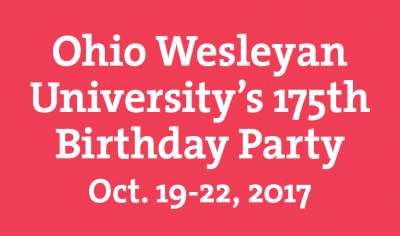
Sidebar: Fulfilling The OWU Connection
Sidebar: Join Alumni & Friends and Make the CASE
